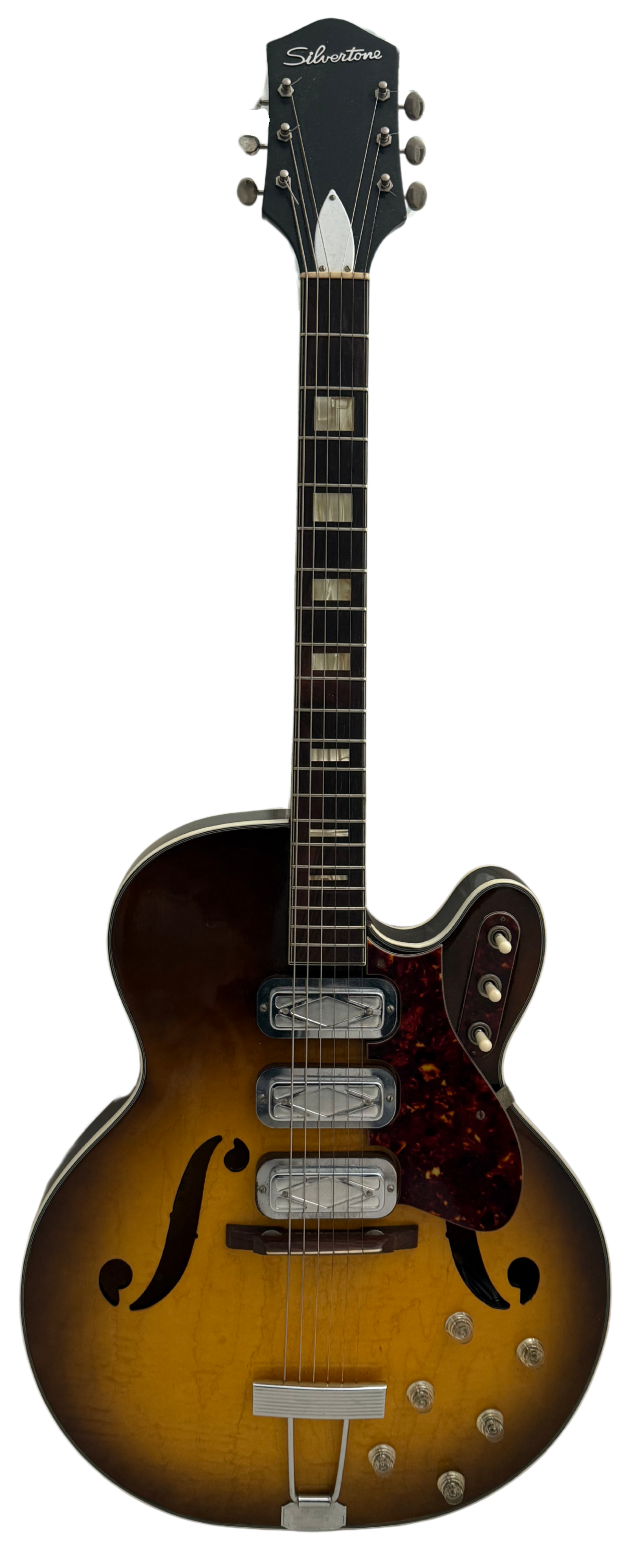Sears, Roebuck & Co started selling stringed instruments in the late 1890s. They primarily sold ukuleles and guitars that were built by the Harmony company in Chicago. The instrument line became so successful for Sears that they bought Harmony in 1916.
In that same year Sears started marketing their housebrand, Silvertone, beginning with a hand-crank phonograph. The line evolved into radios, batteries and eventually Silvertone instruments and amplifiers.
By 1940 Sears shed Harmony from its portfolio. At that point the instrument side of the business was so large Sears was sourcing from several manufacturers and maintained a contract relationship with Harmony. Basically, if a guitar was made for Sears by Harmony it had the Silvertone logo. If it was made by Harmony and went to any other store, it had the Harmony logo or whomever else may have contracted with Harmony for their own brand.
In 1959 Silvertone released this guitar model, the 1429. It was a semi-hollow design made by Harmony and it was the highest-end offering from Sears at the time. It had 3 DeArmond Silver Foil pickups with individual pickup selectors and a volume/tone control for each. The body is made of maple and spruce with a fully bound celluloid binding, a bolt on neck with rosewood fretboard, and pearloid block inlays. In 1963, Sears replaced the Silvertone 1429 with the Bigsby-added model 1454.
This particular guitar was made around 1961. It has a medium, D shaped neck with small vintage frets. The semi-hollow body design and Silver Foil pickups put you right in that early 60’s tone zone. Dave Davies of the Kinks recorded “You Really Got Me” using a Harmony Meteor from the same era and this Silvertone really nails that sound. Dan Auerbach of the Black Keys plays a Harmony H-78 which is very similar to this guitar. He and other popular artists are helping people rediscover these instruments and appreciate their great sound and playability.
I’ve played a number of Silvertone models over the years. Many that have been well worn but they are pretty durable. Their finishes and even their binding seem to hold up well compared to other department store guitars from the 60’s.






